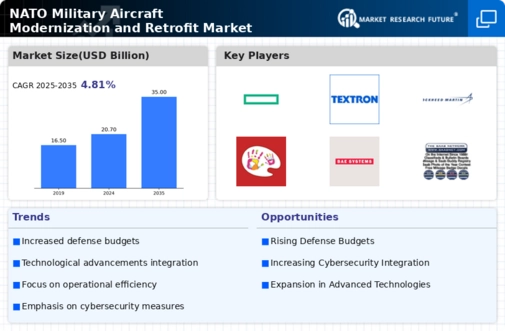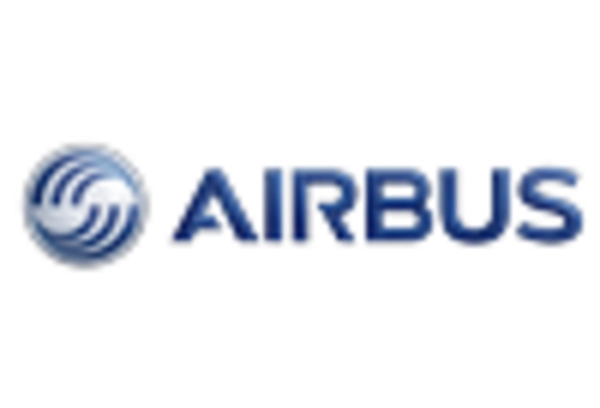Aging Aircraft Fleet
The aging aircraft fleet within NATO member states is a critical driver for the Global NATO Military Aircraft Modernization and Retrofit Market Industry. Many military aircraft are reaching the end of their operational lifespan, necessitating upgrades to maintain effectiveness and safety. Retrofitting older models with modern systems not only extends their service life but also ensures compatibility with contemporary warfare requirements. This trend is particularly evident as nations seek to balance budget constraints with the need for operational readiness. As a result, the market is poised for growth, with a projected compound annual growth rate of 4.9% from 2025 to 2035, reflecting the urgency of addressing fleet modernization.
Increased Defense Budgets
The Global NATO Military Aircraft Modernization and Retrofit Market Industry is experiencing a surge in defense budgets among NATO member countries. As geopolitical tensions rise, nations are prioritizing military readiness and modernization. For instance, in 2024, defense spending is projected to reach 20.7 USD Billion, reflecting a commitment to enhancing aerial capabilities. This trend is expected to continue, with budgets likely increasing to support advanced technologies and upgrades. The focus on modernization is not merely a response to current threats but also a strategic move to ensure long-term operational effectiveness and interoperability among NATO forces.
Technological Advancements
Technological innovation plays a pivotal role in the Global NATO Military Aircraft Modernization and Retrofit Market Industry. The integration of cutting-edge technologies, such as artificial intelligence, advanced avionics, and enhanced weapon systems, is transforming military aviation. These advancements enable aircraft to operate more efficiently and effectively in complex environments. For example, the modernization of legacy aircraft with new sensors and communication systems enhances situational awareness and combat capabilities. As NATO countries invest in these technologies, the market is expected to grow, with projections indicating a rise to 35.0 USD Billion by 2035, driven by the demand for state-of-the-art military solutions.
Interoperability Requirements
Interoperability among NATO forces is increasingly vital in the Global NATO Military Aircraft Modernization and Retrofit Market Industry. As NATO conducts joint operations, the need for compatible systems and technologies becomes paramount. Modernization efforts focus on ensuring that aircraft can communicate and operate seamlessly with allied forces. This requirement drives investments in upgrades that enhance communication systems, data sharing capabilities, and joint operational frameworks. The emphasis on interoperability not only improves mission effectiveness but also fosters collaboration among member nations. As NATO continues to evolve, the modernization of aircraft to meet these interoperability standards remains a key market driver.
Emerging Threats and Security Challenges
The Global NATO Military Aircraft Modernization and Retrofit Market Industry is significantly influenced by emerging threats and evolving security challenges. As global security dynamics shift, NATO countries are compelled to adapt their military capabilities to counter new forms of warfare, including cyber threats and asymmetric warfare. This necessitates the modernization of aircraft to incorporate advanced defensive systems and countermeasures. The ongoing assessment of threat landscapes drives investment in retrofitting existing fleets to enhance resilience and operational effectiveness. Consequently, the market is expected to expand as nations prioritize modernization to address these challenges and ensure national and collective security.

















Leave a Comment